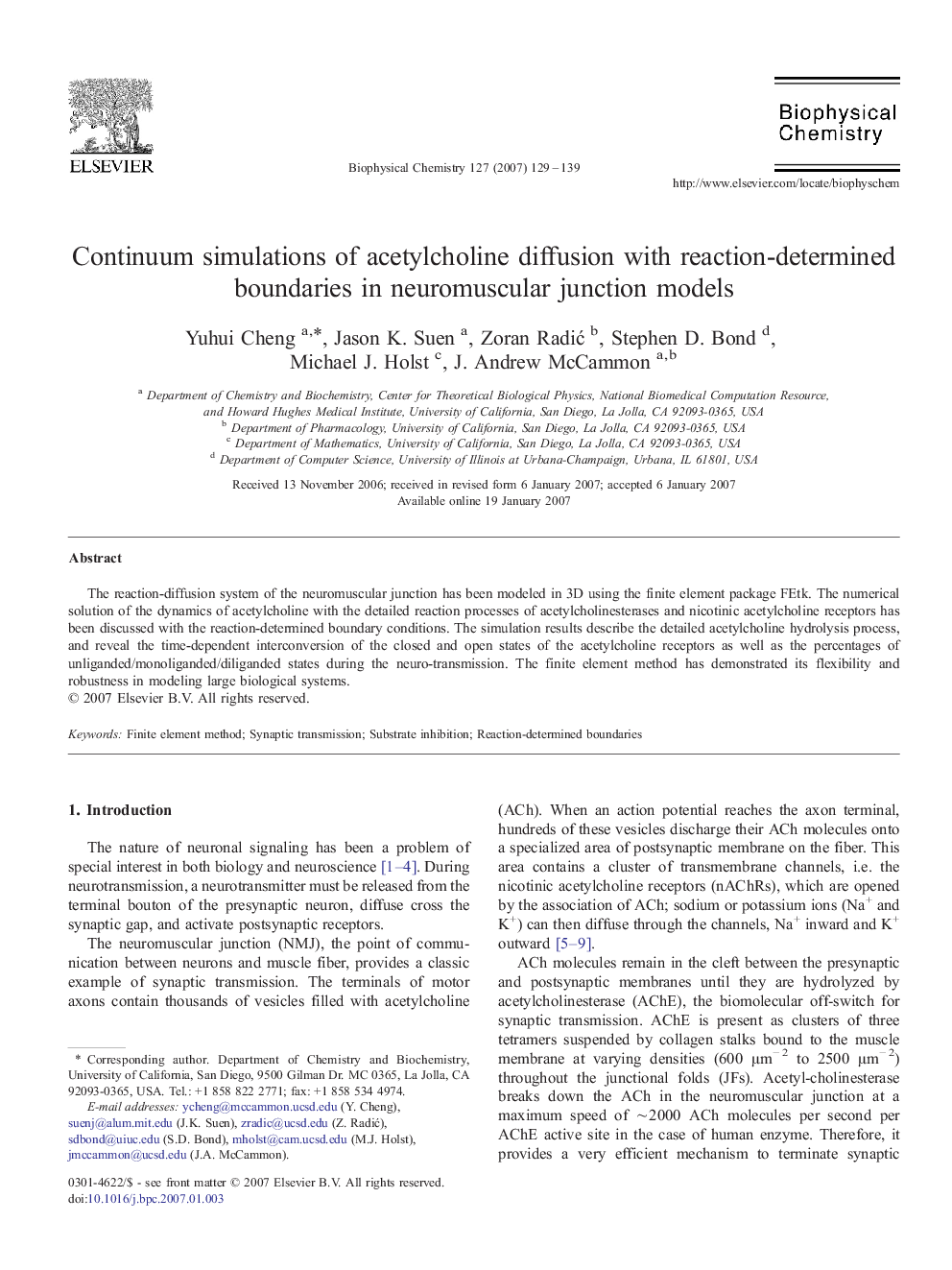| Article ID | Journal | Published Year | Pages | File Type |
|---|---|---|---|---|
| 5372378 | Biophysical Chemistry | 2007 | 11 Pages |
Abstract
The reaction-diffusion system of the neuromuscular junction has been modeled in 3D using the finite element package FEtk. The numerical solution of the dynamics of acetylcholine with the detailed reaction processes of acetylcholinesterases and nicotinic acetylcholine receptors has been discussed with the reaction-determined boundary conditions. The simulation results describe the detailed acetylcholine hydrolysis process, and reveal the time-dependent interconversion of the closed and open states of the acetylcholine receptors as well as the percentages of unliganded/monoliganded/diliganded states during the neuro-transmission. The finite element method has demonstrated its flexibility and robustness in modeling large biological systems.
Related Topics
Physical Sciences and Engineering
Chemistry
Physical and Theoretical Chemistry
Authors
Yuhui Cheng, Jason K. Suen, Zoran RadiÄ, Stephen D. Bond, Michael J. Holst, J. Andrew McCammon,
